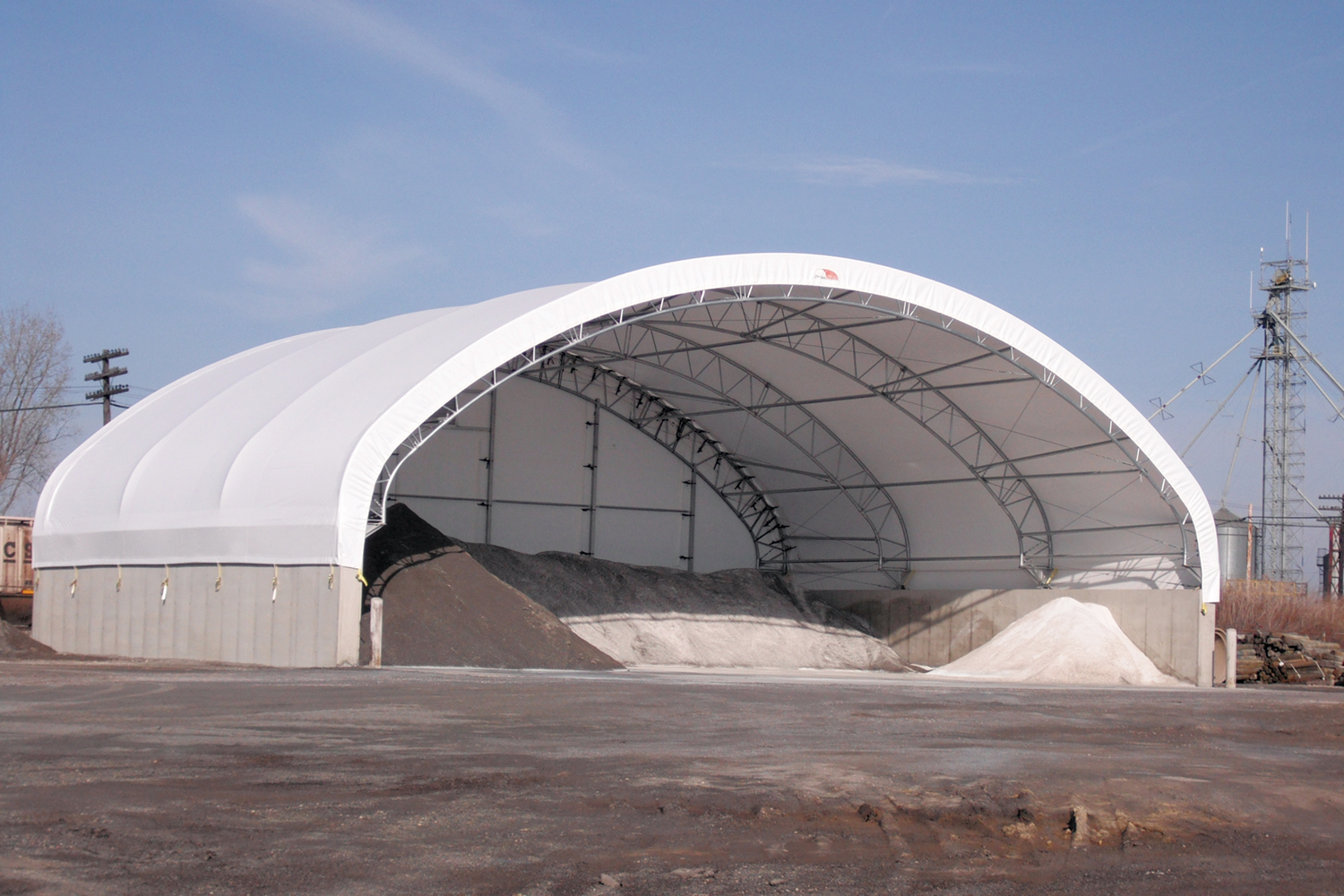Road Salt Management
Adapted from Pollution Prevention/Good Housekeeping for Municipal Operations (USEPA)
Description

The application and storage of deicing materials, most commonly salts such as sodium chloride, can lead to water quality problems for surrounding areas. Salts, gravel, sand, and other materials are applied to highways and roads to reduce the amount of ice during winter storm events. Salts lower the melting point of ice, allowing roadways to stay free of ice buildup during cold winters. Sand and gravel increase traction on the road, making travel safer.
MADEP has developed a guidance document for communities regarding snow disposal, available on the web at:
http://www.mass.gov/dep/brp/files/snowdisp.htm. This guidance document recommends the following to establish a snow disposal site. The key to selecting effective snow disposal sites is to locate them adjacent to or on pervious surfaces in upland areas away from water resources and wells. At these locations, the snow meltwater can filter in to the soil, leaving behind sand and debris which can be removed in the spring. The following areas should be avoided:
- Avoid dumping of snow into any waterbody, including rivers, the ocean, reservoirs, ponds, or wetlands. In addition to water quality impacts and flooding, snow disposed of in open water can cause navigational hazards when it freezes into ice blocks.
- Do not dump snow within a Zone II or Interim Wellhead Protection Area (IWPA) of a public water supply well or within 75 feet of a private well, where road salt may contaminate water supplies.
- Avoid dumping snow on DEP-designated high and medium-yield aquifers where it may contaminate groundwater (see the next page for information on ordering maps from MassGIS showing the locations of aquifers, Zone II’s, and IWPAs in your community).
- Avoid dumping snow in sanitary landfills and gravel pits. Snow meltwater will create more contaminated leachate in landfills posing a greater risk to groundwater, and in gravel pits, there is little opportunity for pollutants to be filtered out of the meltwater because groundwater is close to the land surface.
- Avoid disposing of snow on top of storm drain catch basins or in stormwater drainage swales or ditches. Snow combined with sand and debris may block a storm drainage system, causing localized flooding. A high volume of sand, sediment, and litter released from melting snow also may be quickly transported through the system into surface water.
In addition to carefully selecting disposal sites before the winter begins, it is important to prepare and maintain these sites to maximize their effectiveness. The following maintenance measures should be undertaken for all snow disposal sites:
- A silt fence or equivalent barrier should be placed securely on the downgradient side of the snow disposal site.
- To filter pollutants out of the meltwater, a 50-foot vegetative buffer strip should be maintained during the growth season between the disposal site and adjacent waterbodies.
- Debris should be cleared from the site prior to using the site for snow disposal.
- Debris should be cleared from the site and properly disposed at the end of the snow season and no later than May 15.
Applicability
This practice is applicable to areas that receive snowfall in winter months and require deicing materials. Municipalities in these areas must ensure proper storage and application for equipment and materials and identify appropriate areas for snow disposal.
Siting and Design Considerations: Many of the problems associated with contamination of local waterways stem from the improper storage of deicing materials. Salts are very soluble when they come into contact with storm water. They can migrate into ground water used for public water supplies and also contaminate surface waters.
More information about road deicing materials can be found at the American Association of State Highway and Transportation Officials web page at www.transportation.org/aashto/home.nsf/FrontPage.
Limitations
Road salt is the least expensive material for deicing operations; however, once the full social costs are taken into account, alternative products and better management and application of salts become increasingly attractive options.
Maintenance Considerations: Covering stored road salts may be costly; however, the benefits are greater than the perceived costs. Storing road salts correctly prevents the salt from lumping together, which makes it easier to load and apply. In addition, covering salt storage piles reduces salt loss from storm water runoff and potential contamination to streams, aquifers, and estuarine areas. Salt storage piles should be located outside the 100-year floodplain for further protection against surface water contamination.
During road salt application, certain best management practices can produce significant environmental benefits. The amount of road salt applied should be regulated to prevent oversalting of motorways and increasing runoff concentrations. Many drinking water supply watersheds in Massachusetts use lower amounts of road salt to protect the resource.
The amount of salt applied should be varied to reflect site-specific characteristics, such as road width and design, traffic concentration, and proximity to surface waters. Calibration devices for spreaders in trucks aid maintenance workers in the proper application of road salts. Alternative materials, such as sand or gravel, should be used in especially sensitive areas.
References
Massachusetts Guidelines on Deicing Chemical (Road Salt) Storage (1997), available on the web at:
http://www.state.ma.us/dep/brp/dws/files/saltgui.doc
American Association of State Highway and Transportation Officials. 2000. AASHTO: Transportation Center of Excellence.
www.transportation.org/aashto/home.nsf/FrontPage
Massachusetts Executive Office of Environmental Affairs. Adopt a Stream Program. Road Salt: Some Alternatives and Strategies.
http://www.mass.gov/dfwele/river/programs/adoptastream/index.htm
MA-DEP Bureau of Resource Protection. 1997. Massachusetts Guidelines on Deicing Chemical (Road Salt) Storage.
http://www.state.ma.us/dep/brp/dws/files/saltgui.doc USEPA. 1995. Planning Considerations for Roads, Highways and Bridges. U.S. Environmental Protection Agency, Office of Water, Washington, DC.
www.epa.gov/OWOW/NPS/education/planroad.html
Koppelman, L.E., E. Tanenbaum, and C. Swick. 1984. Nonpoint Source Management Handbook. Long Island Regional Planning Board, Hauppauge, NY.